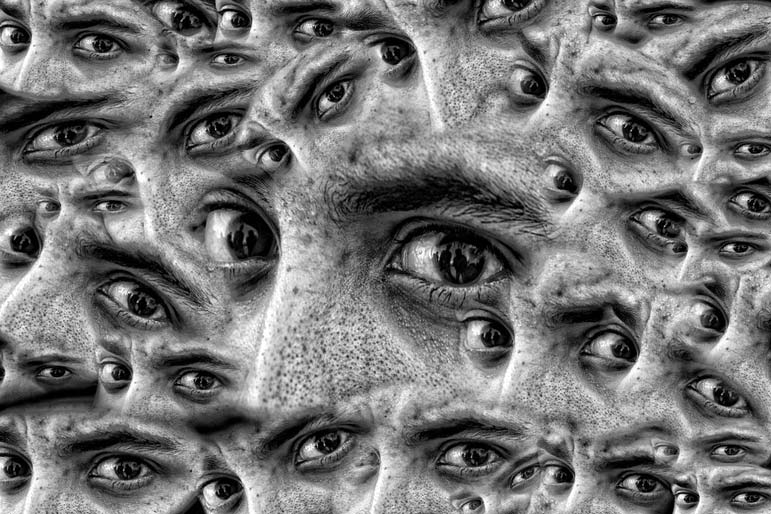
Two 4-year-old girls visited my office during our Jewish day school's Purim parade; they wore matching yellow princess dresses with plastic tiaras. "We're twins," they announced. "You can't tell us apart!"
I smiled at these two. One was 2-inches taller than the other; one had curly hair and one straight. "I think I can tell."
"I know," said one triumphantly, as she turned to her best friend. "Mrs. Weintrob can tell us apart because you're wearing glasses."
As principal, I enjoyed these visits very much. I gave these "twins" a hug, told them how great their costumes were and watched them rejoin their class.
I didn't tell these best friends it was quite easy to tell them apart because one was white and one was black.
The question is did these 4 year olds know this? I'm sure they did. As they held hands going out to the playground, they saw that their skin tones were not the same.
So why did they say to me that they were twins?
Many say children are colorblind and haven't learned to hate one another. Certainly it is true that we as we grow, we learn divisive prejudices and identity politics.
Are children colorblind in this sense?
I know enough about being colorblind. My father was colorblind, as is my son.
Despite the common notion that colorblind people do not see colors, the fact is they just see colors differently. When my son was growing up and did not always color the grass green or the sky blue, we told him stories of his grandfather, who had been a forward observer in the army because he could see through the camouflage made for ordinary eyes. "He had super vision," my son would yell gleefully. And that he did.
Primetime media covers the divisions among Americans these days. Riots in which Antifa, black-hooded and garbed ISIS look-a-likes, carry flamethrowers and baseball bats and meet Klan or Nazi marchers who along with weapons, feel the same violence and hatred. These zealot haters create havoc and division and, in some tragic cases, cause injury and death. And these violent right and left-wingers intersect in their hatred, racism and anti-Semitism.
We saw a different America in the heroism of the ordinary person during Texas' flood disaster. Folks motored up their boats and brought supplies to neighbors and strangers. Monster trucks rescued those stranded in high water, making several trips for family members and pets. Volunteer rescue organizations, religious groups and businesses opened their doors. The Trump administration had FEMA on the ground before Hurricane Harvey hit and coordinated federal, state and local agencies to an amazing degree.
The images that brought pride to most Americans were those people of different hues and backgrounds, hand in hand, some wearing glasses, some with straight and some with curly hair, pulling an elderly man in a wheelchair out of flood waters, carrying a frightened dog or handing water to a mother holding a baby.
Did they see the differences? I'm sure they did. And there is no doubt in my mind that my little 4 year olds saw their differences as well. What was apparent was that the differences just weren't important.
The extremists and the haters on both sides of the political spectrum say that our differences are irreconcilable and that one group needs to dominate or eliminate the other. The flood heroes and my little "twins", and most Americans I believe, are looking for what we have in common.
It is not only how we feel but also how we act that is crucial. Opposite from what we might think, our actions affect our thoughts. As we interact positively with others, whether in heroic actions like in Texas or in everyday encounters, we find that we feel better about ourselves and we understand that boundaries between people can change.
Long ago, the Jewish sage Hillel -- who died in the year 10 -- taught this concept in his famous encounter with a gentile who said he would convert to Judaism if a rabbi could manage to teach him the entire Torah in one tweet (ok --- he said while standing upon one foot. Thought I would modernize a bit.).
Hillel's colleague, Shammai, had already thrown him out, like many of us would have done. Hillel, however, told him, "What you don't like, don't do to others. This is the whole Torah --- now go and study." Well below the 144 character maximum.
His teaching is as pertinent today as it was then.
While the 4 year olds hadn't yet studied Hillel, they had already gotten beyond the not doing what is hateful. They found what binds one to another.
My little "twins" could teach the haters something important.
Comment by clicking here.
Susan Weintrob, one of JWR's very first contributors, is a retired educator who writes full time in Charleston, SC.



 Contact The Editor
Contact The Editor
 Articles By This Author
Articles By This Author